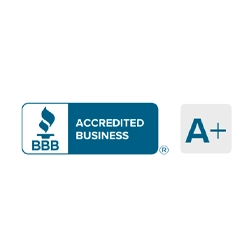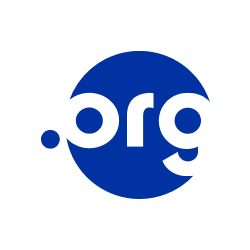Fast domain transfers

Transfer a domain
- Custom Nameservers
- Free DNS Management
- ID Protection Option
- Domain Theft Protection
- 24/7/365 Guru Support




Begin your transfer by typing your domain below
Easy domain transfers
Hosting.com makes domain transfers easily and affordable. All you need is your Extensible Provisioning Protocol (EPP) code from your current domain registrar to transfer a domain name to an hosting.com account. Our 24/7/365 global support team is standing by if you have any questions about domain transfers or how to move your site to us. Domain transfer features custom nameservers, free DNS management, and free domain theft protection.
Customize how your domain’s information is displayed in “Whois” searches.
Speed up your website and improve availability with reduced redundancy.
Protect your personal information and reduce spam (available on select TLDS).
Prevents domain hijacking or transferring from your account without permission.
Our team of friendly support experts are here around the clock if you need help!
Get going at great speeds with 3x faster reading and writing capabilities.

Questions?
We’re here to help.
Our hosting.com Sales Team is available 24/7 to help you understand which plan will work for your unique needs!
What our customers have to say
Hosting.com as an alternative to Hostgator
I had tons of troubles with Hostgator and decided to move 6 months earlier. Hosting.com (previously A2 Hosting) was a price match but I was also looking for cPanel and cPanel migration and a few other features. I am super happy with the speed of my websites and support desk seem to be A class. Hostgator was good only at the beginning, in the past two years everything has gone south bit by bit. I can provide screenshots of the mistakes and answers from Hostgator customer support for what I say here
I love hosting.com
Best internet support I have had since 1993 when internet first went public, I have been through several hosts with my media company and school and hosting.com support staff are knowledgeable, thorough, pleasant and treat clients with respect and understanding. I can't say enough. Keep up the great work. Thank you for saving my domains and email from hackers.
Tech support is the #1
The reply to my question was swift and to the point. It seems that when moving a domain, there is always one more step. The Guru pointed out the missing step, and the problem was quickly remedied. Many thanks.
The latest domain news and articles
Domain registration & buying domains FAQs
At hosting.com, our goal is to make your domain registration fast, easy and affordable. We understand you may have some domain registration questions along the way. Below you’ll find the answers to some of our most commonly asked domain registration questions. Of course if you still have any questions before you transfer or a buy a domain from hosting.com, our 24/7/365 Guru Crew Support team is standing by to help. Just email us, call us or live chat with the hosting.com team!
As a customer, you get access to our user-friendly portal My hosting.com. This easy-to-use portal is where you can setup auto-renewal of your . domain, manage your nameservers, setup registrar lock, DNS Management, renew your domain and much more.
Yes! A domain transfer will move the actual domain registration from another company to us here at hosting.com. That way you’ll be able to manage hosting as well as domain registration right from our client portal. A migration involves the actual moving of the website content to a new account on our network.
A domain transfer is simply the process of changing a registrar of a domain to a new designated domain registrar. When you transfer your domain, all of the domain’s billing and administration information are also moved to the new domain registrar.
Not all domain registration companies offer web hosting. Likewise, not all web hosting companies offer domain registrations. At hosting.com, we offer both! At hosting.com, we offer the quickest, easiest and affordable domain registrations. Not only that, you’ll also get the benefit of our our high performance web hosting. When your domains are registered with the same company where you host your websites, you greatly simplify the administration portion of managing your websites.
If you host your sites with hosting.com, you’re already aware of our user-friendly, high performance platform available with our Shared, Reseller, VPS and Dedicated Servers. Just think of how much more convenient it will be for you when all of your website data (domain and hosting) are all located with a single company. This is even more convenient when you own and manage a number of websites.
At hosting.com, we have world class web hosting support. Our Guru Crew team is known for being extremely friendly and knowledgeable. If your domain is registered elsewhere, our team may not be able to assist you as quickly since they do not have ready access to your domain registration information. You will have to request assistance from your domain registrar in some instances, who won’t be able to offer the same top-notch service that our team is able and trained to offer you.
Domains and web hosting are closely related, but separate services. A domain is the name used for your website. For example, hosting.com is our domain. Hosting, on the other hand, is what is needed to have your website appear online. Hosting is the space on a server where the files that your website is made of are stored.
Yes! To ensure the smoothest transfer process possible, you will want to make sure you have the EPP (Extensible Provisioning Protocol) code from your current domain registrar, the domain name is unlocked and the domain’s contact information is current.
DNS propagation can take 24-48 hours to finish once you complete your domain’s nameserver settings update. You won’t be able to use your domain during this period. You can bypass DNS to see your site with the host’s file or a Shared URL though. Follow these instructions to learn how to view your domain during this time.
In addition to offering transfers and domain registrations, hosting.com also offers high speed hosting solutions to help you get your site up and running. Whether you have a brand new site or an enterprise level eCommerce website, hosting.com has a hosting solution that will fit your specific needs.
Domain extensions were also created alongside DNS in an effort to organize domains into logical categories. These extensions were also called top-level domains (TLDs). When launched, each TLD option served a specific purpose. While this is still somewhat true today, the rules regarding who can register a specific domain extension is not even close to as strict as how it used to be. There were 7 domain extensions that were launched in 1985. These TLDs were:
-
.com -- The .com TLD was intended only for commercial-based websites. .com has since grown into the most popular TLD option, and the competition isn't even close!
-
.edu. -- Designed for US education institutions
-
.gov -- Used by United States government agencies
-
.mil -- Designed for United States military entities
-
.net -- Originally intended for sites referencing internet information
-
.org -- A non-restricted TLD that is an abbreviation for "organization"
-
.int -- Launched specifically for intergovernmental organizations and international treaties
Location Specific Domain Extensions
Those first 7 domain extensions were also commonly known as gTLDs, or generic top-level domains. Sites within a gTLD are intended to cover the same topic or category. ccTLDs, or country code tep-level domains, is another classification of TLDs. ccTLDs were launched with the intent of classifying websites based on their geographical location. Much like how gTLD restrictions are no longer enforced or regulated, ccTLD registrants are widely no longer location restricted. However, this is not the case for all country-specific domain extensions. The first available ccTLDs were:
-
.us -- United States-based sites
-
.uk -- United Kingdom-based sites
-
.il -- Israel-based sites
Shortly after the first 3 ccTLDs were introduced, a number of other options were launched. These ccTLds were:
-
.au -- Australia-based sites
-
.de -- Germany-based sites
-
.fi -- Finland-based sites
-
.fr -- France-based sites
-
.jp -- Japan-based sites
-
.kr -- Republic of Korea-based sites
-
.nl -- Netherland-based sites
-
.se -- Sweden-based sites
To get a complete understanding of what a domain extension is, you have to go back in time to the 1980s. Back in the early days of the internet, you needed to type out an internet protocol (IP) address in order to access a host on a network. An IP address is simply a string of numbers and periods. Computers were able to communicate with each other using IP addresses. If this sounds complicated, it’s because it was. There weren’t powerful search engines back then either, like we have now, to help you navigate to the site you wanted. While there weren’t many computers that were connected to the internet back in the 80’s, the only way to access a website was to remember the IP addresses for each site and type it in. Sounds messy, right?
Clearly a better, more efficient solution was needed. The solution that was created was the domain name system (DNS). DNS is basically an IP address database. Instead of having to remember an IP address to access a website, you type the domain name into the browser. DNS translates this entered domain name into an IP address that computers understand and are able to communicate with. When your domain is entered into their browser, DNS translates it into an IP address because that is what computers understand. You are then directed to the requested website.
With hundreds of domain extensions to choose from, you may be overwhelmed picking the right one. We’re here to help!
- When In Doubt, Choose .com – The .com TLD is far and away the most popular and recognized domain extension. You can’t really go wrong with the .com TLD!
- Or Don’t Pick .com… – While a .com domain extension might seem like the obvious choice, its popularity means a lot of the most popular domain options have already been scooped up. Luckily there are hundreds of other domain extensions to choose from!
- Make The Logical Choice – There are hundreds of domain extension options because there are endless website topics. Do you run a limousine company? Consider the .limo extension. Do you run an art studio? Consider the .studio domain extension. Is your site a blog? Choose the .blog domain extension. You’re bound to found a logical domain extension to use for your site.
- Consider A Domain Extension Hack – If you really want a memorable domain, consider a domain hack with your choice of TLD. A domain hack incorporates the domain extension into your domain name. Some examples are rad.io, instagr.am and sca.red.





![Top 7 domain extensions for businesses in 2025 [and when to use each]](https://cms.hosting.com/assets/blog/blog-ht-domain-extensions-min.png)